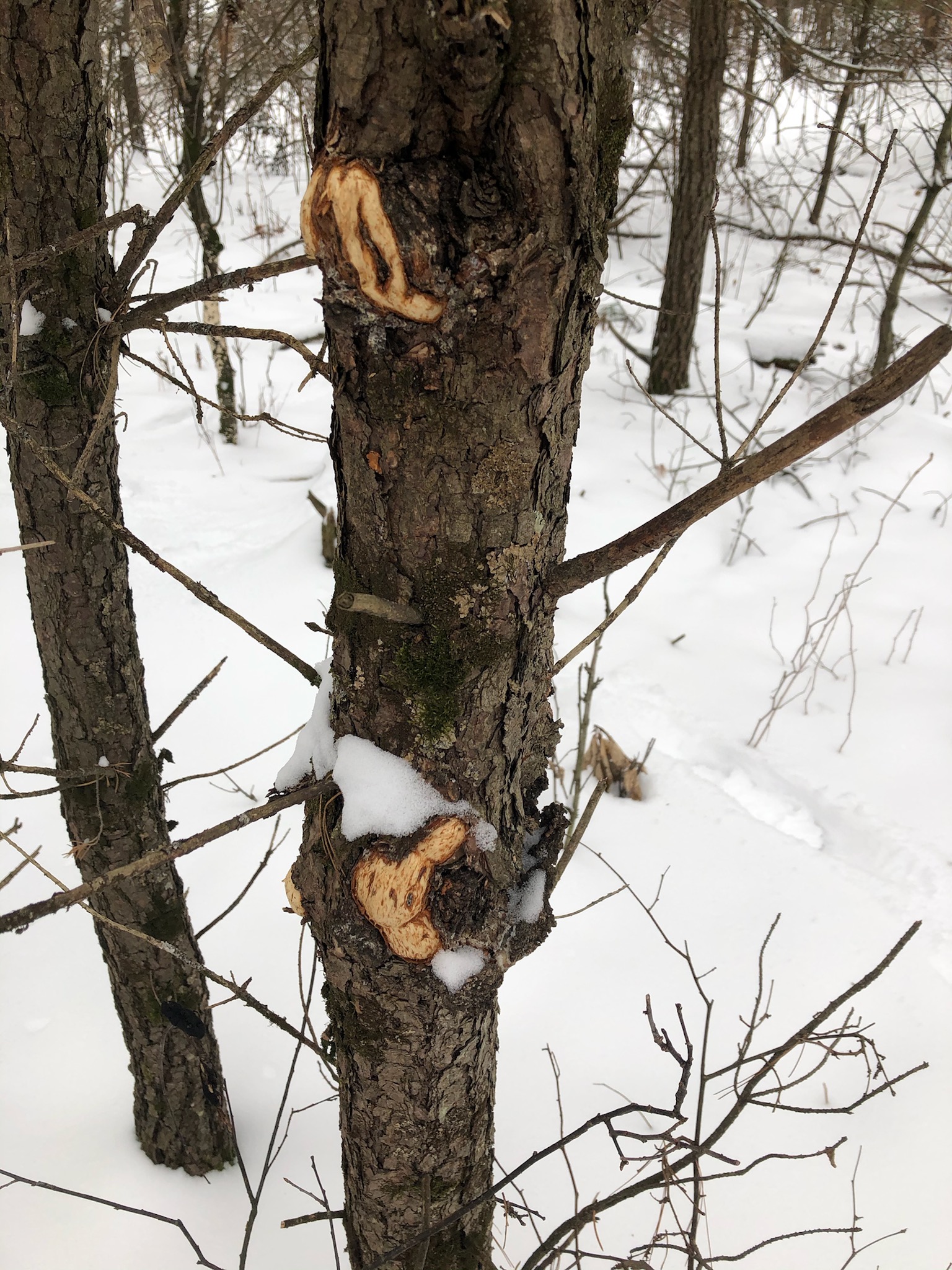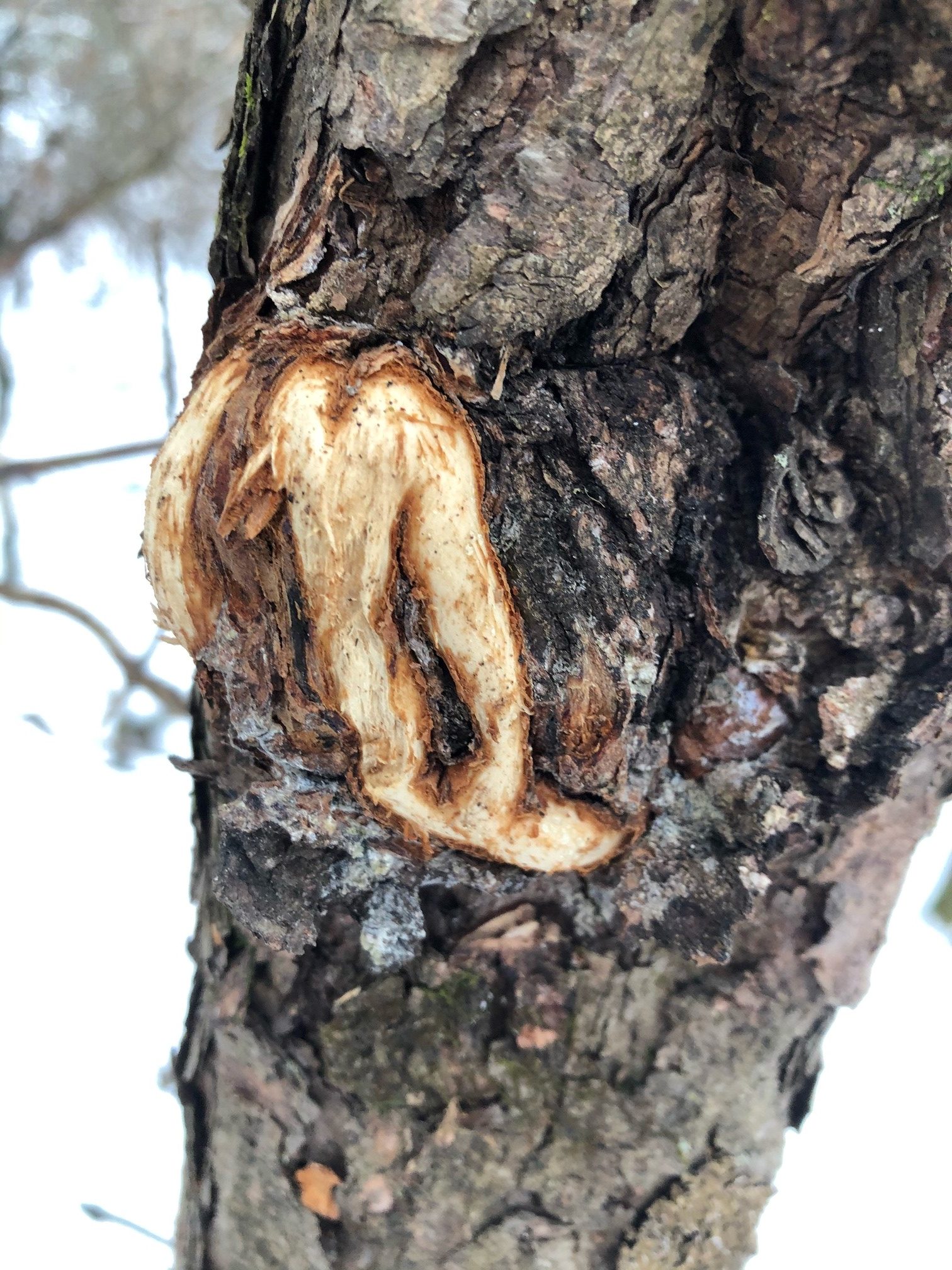By Todd Lanigan, DNR Forest Health Specialist, Eau Claire. Todd.Lanigan@wisconsin.gov or 715-210-0150
Stalactiform stem rust, which occurs in the Lake States and Canada on jack pines, was recently found in western Monroe County. Before this discovery, the only place I have seen stalactiform stem rust in Wisconsin was Adams County in the mid to late 1990s.
Rust diseases can be identified by the galls’ shape and location and by cankers present on the trees. On jack pine seedlings and saplings, stalactiform stem rust can cause elongate swellings on branches or the main stem (trunk).

A jack pine with stalactiform stem rust galls that squirrels have chewed on.
Damage to jack pine caused by rust fungi includes growth reduction and the formation of galls and cankers. These cause the stem and branches to be weaker at that point, predisposing them to breakage by wind, heavy snow and ice.
Galls and cankers can girdle the main stem over time, causing mortality. Seedlings and saplings are affected more than older trees. However, this can act as a natural thinning agent in young stands. In older trees, the stem galls and cankers cause defects, reducing the wood’s quality, which can be a problem with timber production.

Closeup of Stalactiform stem rust gall that a squirrel has chewed on.
Most rust diseases, including stalactiform stem rust, require two separate hosts to complete their life cycle. These rust diseases are known as macrocyclic rusts. Identifying the presence of alternate host plants in the area can help identify the rust disease. Alternate host plants for stalactiform stem rust include cow wheat and Indian paintbrush. Completely accurate identification of rust fungi would require microscopic examination of the spores.
When stalactiform stem rust infections are scattered in jack pine stands, trees with numerous galls and cankers should be removed during thinning operations or other timber stand-improvement treatments. If the stalactiform rust infection in the stand is heavy, conversion to another tree species should be considered.
